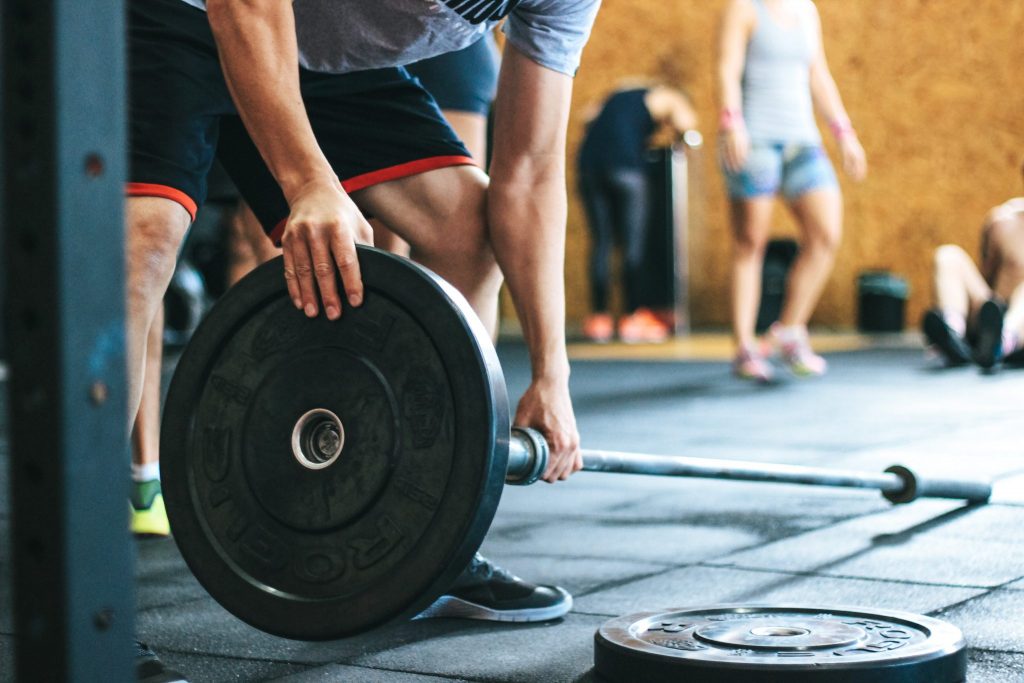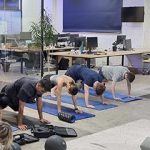What is Muscular Strength?
Muscular Strength refers to the amount of force a muscle can produce in a single maximal effort. It is relative to both the size of muscle fibres and the nerves ability to activate these fibres.
Muscular strength is also one of the most common motivators for people to seek advice from a personal trainer. In this blog we will discuss:
- What influences Strength
- The role of the nervous system in strength training
- How this can help training
What Influences Strength?
Engaging in resistance training is a fantastic way to not only increase your strength but also build muscle. This is one of the great functional and aesthetic benefits of training. Larger muscles correlate with improved strength, however it is just one of the numerous variables that influence our strength.
According to Frederick Delavier and Michael Gundill as explored in their outstanding book ‘The Strength Training Anatomy Workout’. The following factors all come together to provide overall strength.
- Strength of the Impulse Sent by Each Motor Neuron
- Size of the Muscle
- Intramuscular Coordination
- Number of Motor Neurons used
- Intermuscular Coordination
The Role of the Nervous System in Strength Training
To understand why strength is more than simply the size of the muscle, it is important to have a basic understanding of how movement works. Human movement is initiated with a conscious choice to move a particular group of muscles. A signal goes from our brain down the spinal cord and out to the targeted muscle group. These signals then initiate the muscles to go into a specific sequence of contracting, relaxing and stabilising allowing us to move.
Intramuscular Coordination
Importantly the efficiency of these signals can vary and is generally weaker in people that live sedentary lifestyles. According to Frederick Delavier and Michael Gundill In a sedentary person, when motor neurons discharge their electrical impulses, they do so in a disorderly fashion. The muscle fibers contract in a random, and therefore inefficient, way. Through training, these discharges become synchronized. The fibers begin contracting in a coordinated manner. Muscles become more efficient. This is known as intramuscular coordination and relates to a specific group of muscles to fire strongly when given the signal. Resistance training improves our intramuscular coordination and therefore enhances our muscles ability to work at peak efficiency.
Intermuscular Coordination
Closely related to this is intermuscular coordination. This refers to how muscles fire in coordination with other muscles. Rarely do muscles move at an individual level. Consider a bicep curl, as the hand moves up towards the shoulders our bicep muscle contracts (shortens) while the tricep lengthens. In this scenario these two muscles are working together to allow a movement to happen. This occurs with almost every movement we do. Some muscles contract, some relax (lengthen) and others switch on to stabilise us.
When we increase resistance in a movement such as a dumbbell chest press, we test out our muscles ability to coordinate the movement smoothly. If you are performing a chest press with heavy dumbbells for the first time, you will generally find the movement is shaky and doesn’t feel smooth. If you repeat this time and time again, your muscles will learn to sync up and coordinate this movement smoothly. This gain in efficiency translates to an increase in strength. It is the same in all areas of fitness when you have to learn a new move. It is the volume of work, and therefore the repetition of a movement or an exercise, that improves intermuscular coordination.
The Central Nervous System
As you can see the nervous system and its ability to communicate efficiently and effectively with a group of muscles plays a big role in strength. It is also important to understand that the central nervous system (CNS) does not always operate at an optimal level. For example if you are run down and fatigued, you will not get the same response from your CNS as you would if you were well rested and alert. For this reason, some days you simply won’t be able to achieve those personal best lifts. You may go in feeling okay, but if your CNS is not operating at its peak, you simply will not be able to lift to the best of your ability. This is one of the numerous reasons why sleep and rest are just as important in a training regime as the work itself.
How Does This Relate To Your Training?
Expect dramatic gains early
Now that you have an understanding of how both the size of a muscle and the nervous system impact strength; consider a beginner training program. If you walk into the gym for the first time today and start with a chest press, you can expect a lot of your energy to go into coordinating and controlling the movement (intra and intermuscular coordination). Continue to do this, for a few weeks and over time, that energy expenditure going into coordinating the movement can now transition to lifting the weight. You will therefore start to lift heavier in a rehearsed movement very early on. Unfortunately this steep improvement in strength will start to slow down as you progress through your program. A lot of those early gains can be attributed to intra and intermuscualr coordination, so do not worry if you feel you are not progressing as quickly the further into your exercise regime you are.
Learn the movement first
It can be beneficial to give your body time to learn a movement before you start performing a maximum lift. For example if you are lifting as heavy as you can on a chest press the first time you walk into a gym, you will be moving the weights with poor bio-mechanical efficiency. This can lead to injury. Therefore, learn the movement and correct form, then progress to maximum lifts.
Lift Heavy With Good Form
Maximum lifts with good form will recruit muscles to fire to maximum capacity. This is where we will get maximum value in our strength gains. Therefore once you are confident with the movement, lifting heavy is beneficial. If you are new to a gym, or working out in general, seeking advice from a personal trainer is highly recommended. At Functional For Life personal training we are highly focused on teaching and reinforcing correct and efficient movement. This ensures minimal risk of injury and biomechincally efficient intra and intermuscular coordination.
We hope this has given you a deeper understanding of how resistance training improves strength. If you need a personal trainer in Adelaide or Melbourne or if you are after general exercise advise, you can contact us here. Happy Training!






